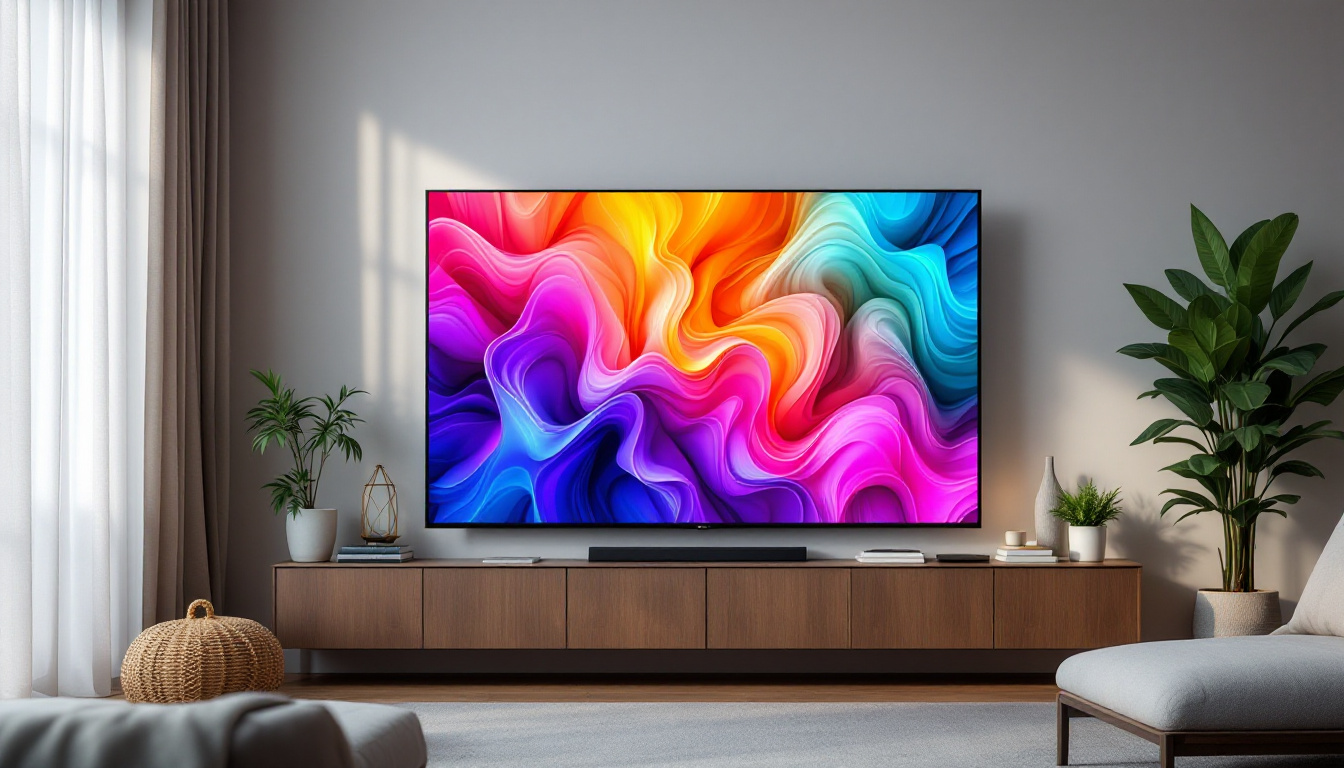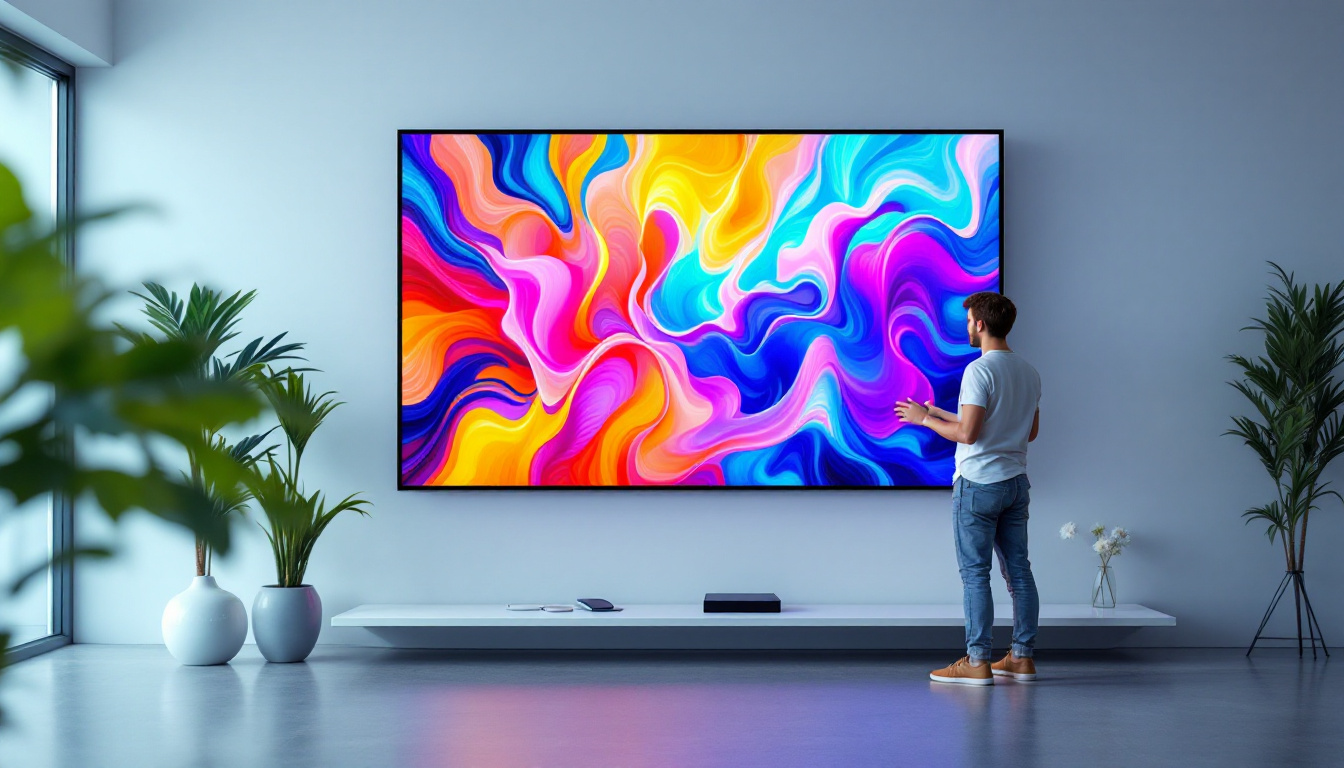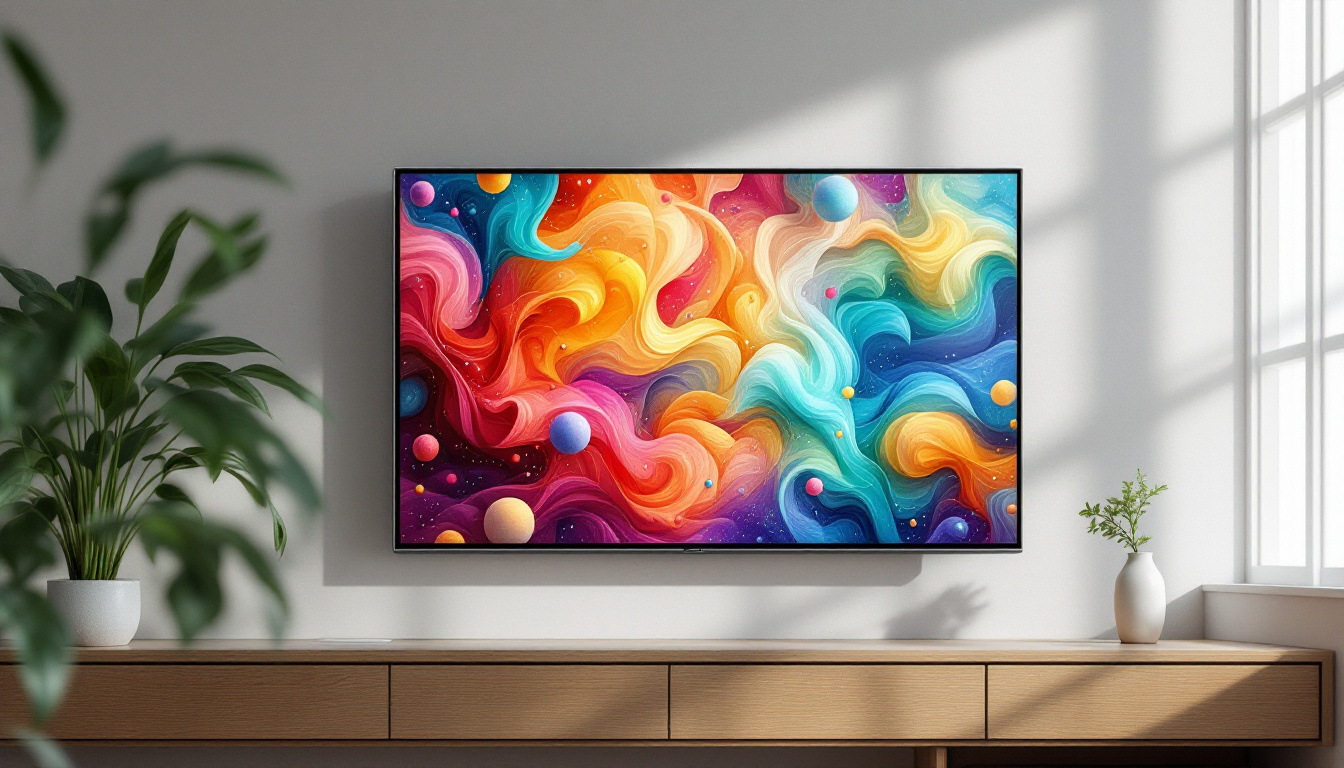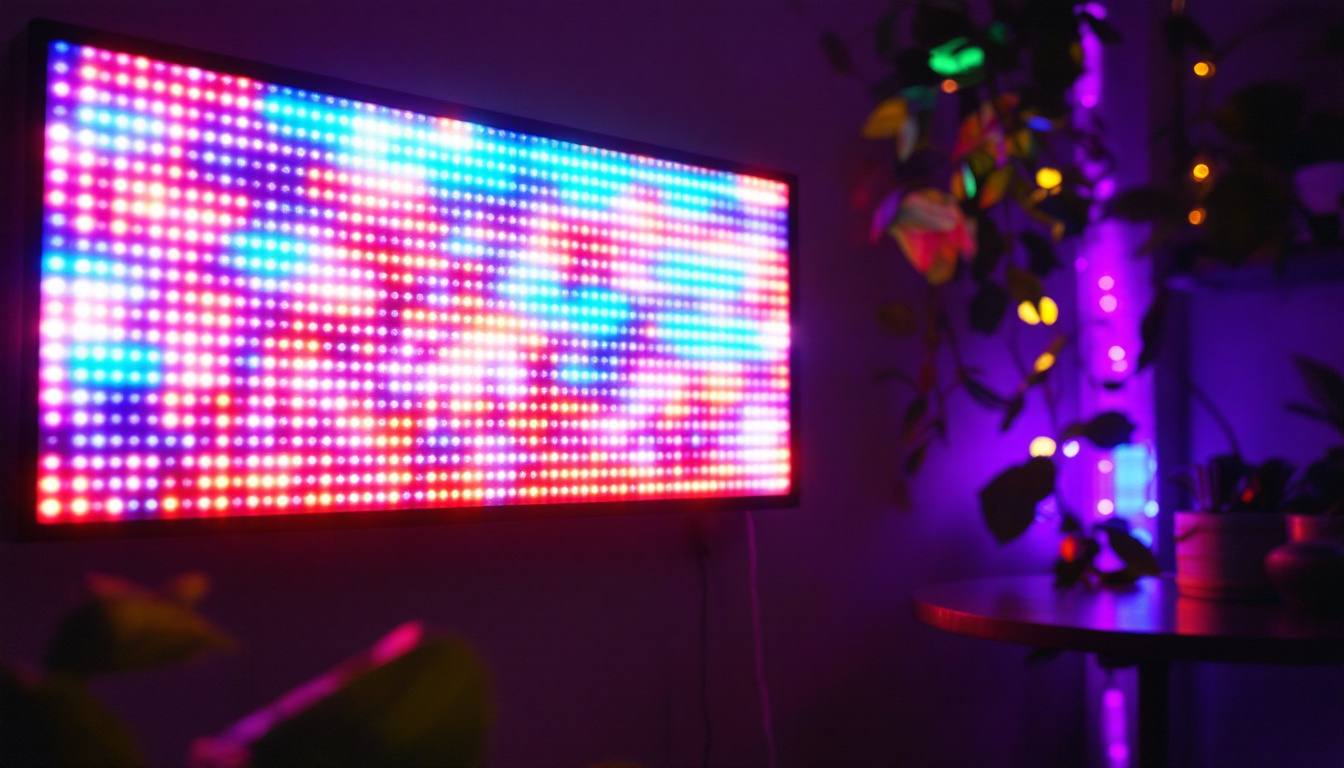42 Plasma TV: LED Display Explained
In the world of television technology, the debate between plasma and LED displays has been ongoing for years. While plasma TVs were once considered the pinnacle of home entertainment, the rise of LED technology has changed the landscape significantly. This article delves into the intricacies of 42-inch plasma TVs and how they compare to LED displays, providing insights into their features, advantages, and disadvantages.
Understanding Plasma Technology
Plasma technology utilizes small cells filled with gas that emit ultraviolet light when electrically charged. This light then excites phosphors, producing the vivid colors and deep blacks that plasma displays are known for. The result is a viewing experience that is often praised for its richness and depth. Unlike traditional LCD screens, which rely on backlighting to illuminate pixels, plasma displays generate light at the pixel level, allowing for a more dynamic range of brightness and color saturation. This inherent capability makes plasma technology particularly appealing for those who prioritize visual fidelity in their home entertainment systems.
Color Accuracy and Contrast
One of the standout features of plasma displays is their exceptional color accuracy. Plasma TVs can reproduce a wider color gamut than many LED displays, making them ideal for watching movies and sports. The ability to produce true blacks enhances contrast ratios, allowing for a more immersive viewing experience. This is particularly beneficial in darker scenes, where the depth of black can significantly influence the overall aesthetic and emotional impact of the content being viewed. Furthermore, the phosphor-based technology used in plasma screens allows for more nuanced color transitions, resulting in smoother gradients that are less prone to banding.
In addition, plasma screens maintain color consistency across different viewing angles. This means that viewers sitting off to the side can still enjoy vibrant colors without significant distortion, a common issue with some LED models. The wide viewing angles of plasma displays make them an excellent choice for gatherings or family movie nights, where multiple viewers may be seated at various positions in the room. This characteristic is a testament to the technology’s design, which prioritizes a shared viewing experience without compromising on quality.
Response Time and Motion Blur
Another advantage of plasma technology is its superior response time. Plasma TVs can handle fast-moving images with minimal motion blur, making them a preferred choice for action-packed movies and sports broadcasts. The rapid refresh rates of plasma displays ensure that viewers can enjoy smooth transitions without the ghosting effect that sometimes plagues LED screens. This capability is particularly important in high-speed sports, where every frame counts and clarity can make a significant difference in the viewing experience.
Moreover, the ability of plasma screens to render fast motion without blurring is complemented by their high frame rate capabilities. This means that even during rapid camera pans or quick scene changes, the image remains sharp and clear. This feature not only enhances the enjoyment of fast-paced content but also makes plasma displays suitable for gaming, where quick reflexes and visual precision are paramount. Gamers can appreciate the fluidity that plasma technology offers, making it a compelling option for those who seek an edge in competitive play.
The Rise of LED Technology
LED technology, which stands for Light Emitting Diode, has gained immense popularity in recent years due to its energy efficiency and slim form factor. Unlike plasma displays, which require a significant amount of power, LED TVs consume less energy, making them a more environmentally friendly option. This shift towards LED technology has not only transformed the home entertainment landscape but has also influenced other industries, including automotive and architectural lighting, where energy efficiency and design aesthetics are paramount.
Brightness and Energy Efficiency
One of the most notable advantages of LED displays is their ability to produce higher brightness levels. This makes them particularly suitable for well-lit rooms where ambient light can wash out the picture quality. LED TVs also tend to have a longer lifespan compared to plasma models, which can be a significant factor for consumers looking for a long-term investment. The longevity of LED technology is attributed to its solid-state design, which is less prone to burn-in and degradation over time, ensuring that viewers can enjoy their favorite shows and movies without worrying about image quality deterioration.
Moreover, the energy efficiency of LED technology means lower electricity bills over time. As consumers become more environmentally conscious, the demand for energy-efficient products continues to rise, further solidifying LED displays as a preferred choice. This trend is also reflected in government incentives and rebates for energy-efficient appliances, encouraging households to make the switch to LED technology. Additionally, advancements in LED technology, such as the introduction of organic LEDs (OLEDs) and quantum dot displays, promise even greater efficiency and color accuracy, pushing the boundaries of what consumers can expect from their viewing experience.
Thin and Lightweight Design
LED TVs are typically thinner and lighter than plasma displays, allowing for more versatile installation options. Wall-mounting an LED TV is often easier due to its reduced weight and slim profile. This design flexibility appeals to consumers who want a modern, sleek look in their living spaces. Furthermore, the lightweight nature of LED TVs opens up possibilities for creative setups, such as multi-screen configurations for gaming or immersive viewing experiences, where multiple displays can be arranged seamlessly to enhance the overall aesthetic and functionality of a room.
In addition to their physical advantages, the thin design of LED TVs also allows for innovative features such as built-in smart technology. Many modern LED TVs come equipped with smart capabilities, enabling users to stream content directly from the internet, access apps, and even integrate with smart home systems. This convergence of technology not only enhances the user experience but also aligns with the growing trend of home automation, where devices work together to create a more convenient and connected living environment.
Comparing Picture Quality
When it comes to picture quality, both plasma and LED technologies have their strengths and weaknesses. Understanding these differences can help consumers make informed decisions based on their viewing preferences and environments.
Black Levels and Contrast Ratios
Plasma TVs excel in producing deep blacks and high contrast ratios, which enhance the overall viewing experience. This is particularly important for watching movies in dark environments, where the richness of the image can significantly impact immersion.
On the other hand, LED displays have made significant strides in improving black levels through technologies such as local dimming and OLED (Organic Light Emitting Diode) panels. While traditional LED TVs may struggle to achieve true blacks, advancements in technology have narrowed the gap between the two types of displays.
Brightness and Color Vibrancy
LED displays generally outperform plasma TVs in terms of brightness. This makes them more suitable for bright rooms or environments with significant ambient light. The vibrant colors produced by LED technology can be particularly appealing for viewers who enjoy watching content in well-lit settings.
However, plasma displays still hold their ground when it comes to color accuracy and consistency. For those who prioritize color fidelity and viewing angles, a plasma TV may be the better choice despite the advantages of LED technology.
Longevity and Burn-In Issues
One of the most significant concerns with plasma technology is the risk of burn-in. This occurs when static images are displayed for extended periods, leading to permanent ghosting on the screen. While modern plasma TVs have implemented features to mitigate this issue, it remains a consideration for potential buyers.
Longevity of LED Displays
In contrast, LED displays do not suffer from burn-in issues, making them more suitable for varied viewing habits. Whether watching news broadcasts, playing video games, or streaming content, LED TVs can handle a wide range of usage scenarios without the risk of image retention.
Additionally, LED technology generally boasts a longer lifespan than plasma displays. While a well-maintained plasma TV can last several years, LED models can often exceed the lifespan of their plasma counterparts, providing better value for consumers in the long run.
Price Considerations
Price is often a deciding factor when choosing between plasma and LED displays. Plasma TVs, once considered premium products, have seen a decline in production and availability. As a result, prices for new plasma models can be quite competitive, especially in the used market.
Cost of Plasma vs. LED
While plasma TVs may offer a lower upfront cost, consumers should consider the long-term implications of their purchase. LED TVs, although typically more expensive, provide better energy efficiency and longevity, which can lead to savings over time.
Additionally, the availability of LED models in a wide range of sizes and features allows consumers to find options that fit their budget and needs. This flexibility is a significant advantage for those looking to invest in a new television.
Conclusion: Which is Right for You?
Choosing between a 42-inch plasma TV and an LED display ultimately depends on individual preferences and viewing habits. For those who prioritize deep blacks, color accuracy, and immersive viewing experiences, plasma technology may still hold appeal. However, for consumers seeking energy efficiency, brightness, and versatility, LED displays are likely the better option.
As technology continues to evolve, the lines between these two display types may blur further. Understanding the strengths and weaknesses of each can empower consumers to make informed decisions that enhance their home entertainment experience.
Final Thoughts
In the end, both plasma and LED technologies have their unique merits. The choice between the two should be guided by personal preferences, viewing environments, and budget considerations. With the right information, consumers can find the perfect television to meet their entertainment needs.
Discover the Future of LED Displays with LumenMatrix
As you consider upgrading your home entertainment system or enhancing your business’s visual appeal, LumenMatrix stands at the forefront of LED display innovation. Embrace the next level of visual excellence with our diverse range of LED display solutions, from captivating Indoor and Outdoor LED Wall Displays to dynamic Vehicle and Sports LED Displays, and even customizable options tailored to your unique needs. Experience the transformative power of LED technology and let LumenMatrix help you create unforgettable visual experiences. Check out LumenMatrix LED Display Solutions today and step into a world where clarity and engagement redefine the standard.































